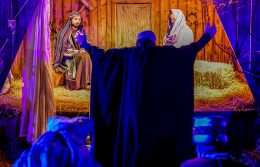Keep Your Home Cool This Summer, Pioneer-Style
Before air conditioning revolutionized our ability to beat the heat, pioneers in Texas relied on various innovative and practical methods to keep homes cool during the sweltering summer months. As we revisit these techniques, we can learn a lot from the resourcefulness and ingenuity of the past. You might even adopt some of these methods to reduce reliance on energy-intensive cooling systems.
Architectural Design
One of the primary ways pioneers kept homes cool was through intentional architectural design. Homes were often built with high ceilings and large, strategically placed windows to promote natural ventilation. Cross ventilation was key, with windows and doors positioned to allow breezes to flow through the house, carrying away heat. Thick walls made from materials such as adobe or stone provided insulation and kept interiors cooler during the hottest parts of the day.

Structures for Shade
Homes were often constructed with wide, overhanging porches that provided shaded outdoor spaces where families could relax. Additionally, trees were planted strategically around homes to reduce the amount of direct sunlight hitting the building. In fact, the concept of planting shade trees is something we can easily adopt today to help cool our homes naturally.
Home Cooling Techniques
For more immediate heat relief, pioneers employed several practical techniques. One common method was the use of dampened sheets or cloths. By hanging wet sheets in doorways or windows, the evaporative cooling effect would help lower the indoor temperature. Similarly, pioneers sometimes slept with damp cloths or towels draped over them to keep cool during the night.
Water Sources
Pioneers often built their homes near rivers, streams, or springs, taking advantage of the cooling effects of nearby water bodies. They would also create makeshift “air conditioners” by placing shallow pans of water in breezy areas; as the water evaporated, it would cool the surrounding air.

Adaptation and Timing
Pioneers adapted their daily routines to the heat, much like residents of hot climates do today. Activities were scheduled for early morning or late evening when temperatures were lower, and the hottest part of the day was reserved for resting in the shade. Clothing was also chosen for its ability to keep cool, with loose, light-colored garments made from breathable fabrics being the norm.
Modern Applications
By taking a page from the pioneers’ playbook, we can find sustainable ways to manage the heat. Planting trees, optimizing home designs for natural ventilation, and using evaporative cooling techniques can all contribute to a cooler home environment with less reliance on air conditioning. As we face increasing temperatures and rising energy costs, these tried-and-true techniques offer valuable lessons from the past.
The pioneers had tried-and-true techniques for just about everything. Discover the historic art of preserving produce.
© 2024 Texas Farm Bureau Insurance



